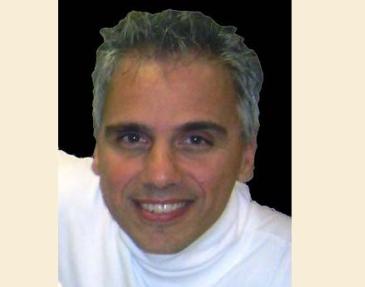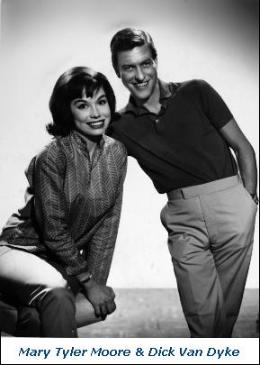We Lucky Viewers of "The Dick Van Dyke Show" - Herbie J Pilato

Classic TV icon Dick Van Dyke has written a new book, My Lucky Life In And Out Of Show Business (Crown Archetype). Yet, according to recent commentary from Mary Tyler Moore, his co-star from the monumental 1961-66 CBS sitcom that bears his name, "luck" had nothing to do with Van Dyke's outstanding existence, personally or professionally.
Indeed.
Dick Van Dyke has always been regarded as one of Hollywood's most talented and amiable performers of TV, film and the stage (where he recently appeared with his brother on the Malibu Stage Company's rendition of Neil Simon's The Sunshine Boys). In addition to the Van Dyke sitcom, he created another small-screen staple in the guise of Dr. Mark Sloan on the long-running CBS series, Diagnosis Murder (1993-2001), and appeared in historic feature films like Mary Poppins, Chitty Chitty Bang Bang and Bye Bye Birdie (following his starring role in the Broadway edition).
But it was The Dick Van Dyke Show that stands out most of all – and with good reason. Viewers and industry insiders alike have considered it for years as the best situation comedy in television history. And here's why:
A happily-wedded husband and wife would watch The Dick Van Dyke Show during its initial run (on CBS from 1961 to 1966), and be gleefully vindicated. Upon viewing the comic adventures of Rob and Laura Petrie (Tyler Moore), the merry married at home would turn to each other and vow, "Now there's an attractive, upper-middle class couple. He has a great job. She enjoys being a housewife and mother to Larry Mathews' little Richie. Though they sometimes act kind of goofy, that means they're not perfect, which means we aren't either. And that's okay."
With a boost from first Nick at Nite in the early 1990s, and more recently, TV Land (which, in 2004, produced the reunion special, The Dick Van Dyke Show Revisited), and other sagacious syndicators, that same real-life home-viewing duo (now, with more salt, than pepper, but equally as wise) continue to enjoy The Dick Van Dyke Show (alongside younger contemporary viewers).
Today's bonded lovebirds in the audience still find it difficult to reject Van Dyke's handsome Mr. Petrie, a refined, respected, and well-established husband and father fashion staple with a good job (as a comedy writer for fictional TV variety hour starring Alan Brady, played to annoying perfection by Carl Reiner). But he's also the guy who's the little kid at heart, unafraid to admit that he doesn't have a workroom that's seething with machismo, courageous enough to reveal that he's always wanted to be Perry Mason or an operative for the FBI. He's in touch with his feminine side, that is, his wife, his prettier better-half; the one to whom he's not embarrassed to divulge emotions, or admissions of physical inferiority (Laura once flipped a drunk in a bar in self-defense, when Rob, alas, just flipped).
Laura is cultivated, sophisticated and, like her twin-TV-counterpart Mary Richards (on The Mary Tyler Moore Show), she "can turn the world on with her smile." With her elegant intelligence and sometimes (but not too often) subtle irreverence, her appeal with viewing husbands and wives alike, becomes multi-dimensional. In a good way. Right before our eyes. With her Capri slacks and Jackie O locks, Laura established a model trend in the fashionable 1960s, in apparel and demeanor. She and Rob were the first self-effacing hipsters of the television age. They made it okay to laugh at oneself. They allowed humor to morph into an attractive trait, instead of an inopportune burden.
Friends and co-workers of the Petries were also milestone, by nature. Rob's under-writers for the Brady show, Buddy Sorrell (the late, great Morey Amsterdam) and Sally Rogers (Rose Marie, who had performed since birth and appeared with Amsterdam in Vaudeville), were joke-meisters but, they too, had other sides. Buddy was the first real character of the Jewish faith to have ever been presented on a mainstream television situation comedy. Sally was just as groundbreaking as the first female character on a TV show, and actually considered "one of the guys."
When Sally did behave in a way that was then considered more acceptable for a woman, she still waxed more dimensional. She just didn't cry. She dealt with her tears. Ms. Rogers explored her lack of knack to find the love of her life but, still, she survived. She had her own apartment, was a member of a male-dominated work force, and was independent. She, not Buddy, was the true threat to the hen-pecked Mel Cooley (played with great sportsmanship by also-gone Richard Deacon, who later appeared on the CBS sitcom, The Mothers-in-Law).
At home, Rob and Laura lived next door to dentist Jerry Helper, played by Jerry Paris, who also directed several episodes (and who died way too young, though not before helming countless segments of The Odd Couple, Happy Days, and so many more great sitcoms, including the famous episode of Here's Lucy featuring Elizabeth Taylor and Richard Burton). Alongside Jerry there was his meddlesome, though caring, wife Millie (Ann Morgan Gilbert, who later became a semi-regular on CBS' The Nanny). At work, around his in-home dental chair, Jerry was a sincere and trusting professional. Once across the fence with Rob, however, he would let loose and get silly. Along with his fellow Van Dyke characters, Dr. Helper adapted to his situation. He wasn't always a dentist or ever a neighbor. He wasn't always serious or ever laughing. He was a little everything, the good with the bad, all the time, just like real people.
The Dick Van Dyke Show was ahead of its time, in execution and display of three-dimensional characters. Mislead 21st Century viewers may think they're screening a contemporary sitcom that is being filmed in black and white, and accuse it of being artsy. But no way. It isn't artsy. It's art. As with any cultural masterpiece, albeit TV classic, The Dick Van Dyke Show's appeal rests with its stoic period representation, social influence, and timeless appreciation of non-insulting, marriage-encouraging, friendship-bonding and work-ethic-inducing scripts.
Herbie J Pilato is a producer/director/writer, and author of a number of media tie-in books (including Bewitched Forever and The Kung Fu Book Of Caine, LifeStory – The Book ofLife Goes On:TV's First And best Family Show of Challenge, The Bionic Book, and NBC & ME: My Life As A Page In A Book. He's worked for A&E, TLC, Syfy, and Bravo's hit five-part TV series, The 100 Greatest TV Characters. Herbie J is also the Founder and Executive Director of The Classic TV Preservation Society, a nonprofit organization that helps to close the gap between popular culture and education. For more information, please see www.ClassicTVPS.blogspot.com. To contact Herbie J, or to order any of his books, email: ClassicTVPS@gmail.com.
Read all Herbie J's MediaBizBloggers commentaries at Herbie J's Classic TV Corner.
Check us out on Facebook at MediaBizBloggers.com
Follow our Twitter updates @MediaBizBlogger
MediaBizBloggers is an open-thought leadership blog platform for media, marketing and advertising professionals, companies and organizations. To contribute, contact Jack@mediadvisorygroup.com. The opinions expressed in MediaBizBloggers.com are not those of Media Advisory Group, its employees or other MediaBizBloggers.com contributors. Media Advisory Group accepts no responsibility for the views of MediaBizBloggers authors.



